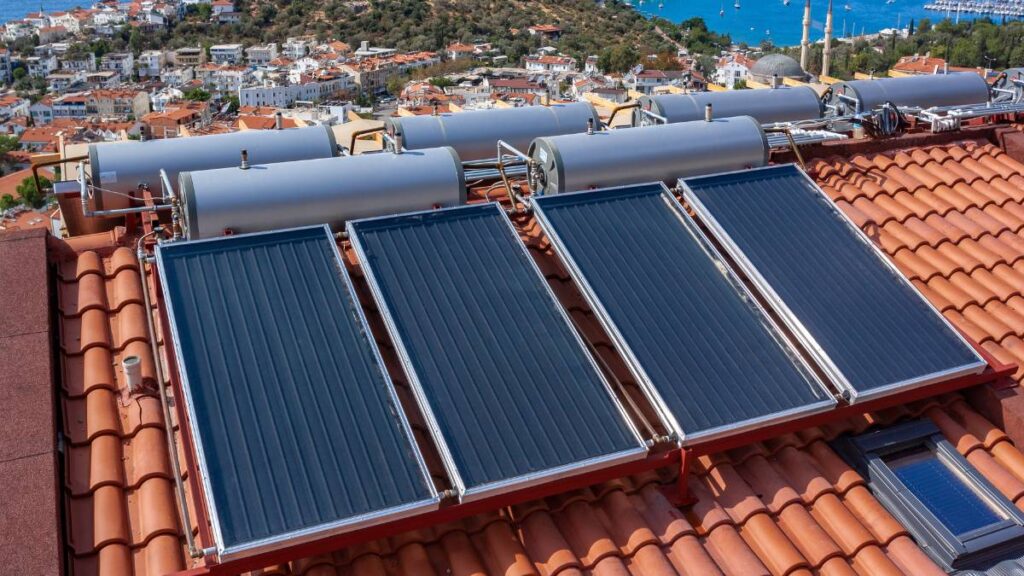Photovoltaic (PV) technology, the science behind converting sunlight directly into electricity, stands as a cornerstone of the renewable energy revolution. With the sun as an abundant and sustainable source, PV technologies are pivotal in shaping a cleaner, greener future. This article explores the advancements, applications, and future potential of PV technologies, shedding light on how they are set to transform our energy landscape.
The Science of PV Technologies
At the heart of PV technology lies the photovoltaic effect, where sunlight hitting semiconductor materials, typically silicon, generates electric current. This process, devoid of moving parts or emissions, encapsulates the essence of converting solar energy into usable power. Over the years, PV technologies have evolved, branching into various types based on materials and efficiency:
- Monocrystalline Silicon Panels: Known for their high efficiency and longevity, these panels are made from single-crystal silicon, offering premium performance at a higher cost.
- Polycrystalline Silicon Panels: These are characterized by their blue, speckled appearance, made from melted fragments of silicon. They offer a balance between cost and efficiency.
- Thin-Film Solar Cells: Made by depositing one or more thin layers of photovoltaic material on a substrate, these cells are lightweight and flexible, suitable for diverse applications but generally less efficient than silicon-based panels.
Advancements in PV Technology
Innovation in PV technology focuses on enhancing efficiency, reducing costs, and expanding applicability:
- Perovskite Solar Cells: Emerging as a game-changer, perovskites offer high efficiency and low production costs, promising a significant leap in PV technology.
- Bifacial Solar Panels: These panels capture sunlight from both sides, increasing energy production and maximizing installation efficiency.
- Building-Integrated Photovoltaics (BIPV): Integrating PV materials into building structures, BIPV represents a seamless blend of architecture and solar energy production.
Applications and Global Impact
PV technologies exemplify versatility, powering an array of applications that demonstrate their adaptability and scalability. From residential setups to grand utility-scale farms, and from portable gadgets to architectural integrations, PV systems are reshaping how we harness and utilize solar energy:
Residential Solar Power Systems
Homeowners worldwide are adopting rooftop solar panels, leveraging PV technology to generate clean, cost-effective electricity. These systems not only reduce household energy bills but also decrease reliance on the grid, offering a sustainable and independent energy solution.
Utility-Scale Solar Farms
At the other end of the spectrum are utility-scale solar farms, massive arrays of PV panels installed over extensive areas, generating megawatts of power. These farms are pivotal in supplying renewable energy to the grid, supporting regional and national energy needs with a sustainable footprint.
Portable Solar Chargers
PV technology has also miniaturized into portable solar chargers, allowing individuals to power devices like smartphones, tablets, and camping equipment. These chargers embody the convenience and accessibility of solar power, providing energy on the go and in remote locations.
Building-Integrated Photovoltaics (BIPV)
BIPV takes the fusion of functionality and aesthetics to new heights, embedding PV materials directly into building components such as roofs, facades, and windows. This integration not only generates energy but also contributes to the architectural design, reducing the need for additional space for solar panels.
These examples underscore the flexibility of PV technology, catering to diverse energy needs from personal to industrial scales. By infiltrating various facets of daily life and industrial operations, PV systems highlight the expansive role of solar energy in driving a renewable-powered future. Through these applications, PV technology is not just a testament to innovation but also a key player in the global shift towards sustainable energy practices.
The Future of PV Technologies
The horizon for PV technologies is expansive and bright. With ongoing research and development, the future promises:
- Increased Efficiency and Lower Costs: Striving for the ‘holy grail’ of solar energy, the industry aims to produce highly efficient, cost-effective solar solutions accessible to a broader audience.
- Integration with Emerging Technologies: Combining PV with innovations like artificial intelligence and IoT can optimize energy production and management, paving the way for smart renewable energy systems.
- Enhanced Energy Storage Solutions: To fully leverage solar power’s potential, advancements in energy storage are crucial, allowing for a reliable power supply regardless of sunlight availability.
Challenges and Considerations of PV Technology
While PV technology presents a promising pathway to sustainable energy, addressing its challenges — from managing the intermittency of solar power and reducing the environmental impact of its production to improving efficiency through ongoing research — is crucial for maximizing its benefits. As the sector evolves, these considerations will play a pivotal role in shaping the future of photovoltaic technology and its integration into the global energy mix.
Intermittency of Solar Energy
One of the most significant challenges facing PV technology is the intermittency of solar energy. Solar power generation is subject to daily and seasonal variations, with output fluctuating based on weather conditions and time of day. This variability necessitates robust energy storage solutions to ensure a steady and reliable power supply. Advances in battery technology, like lithium-ion and flow batteries, are crucial in addressing this challenge, allowing for the storage of excess energy during peak sunlight hours for use during periods of low solar generation.
Environmental Impact of Manufacturing
While PV technology offers a clean alternative to fossil fuels, the manufacturing process of solar panels has its environmental footprint. The production of photovoltaic cells involves the use of hazardous materials and consumes significant amounts of water and energy. Ensuring responsible sourcing of materials, minimizing waste, and implementing recycling programs for end-of-life panels are essential steps to mitigate the environmental impact. Companies and researchers are increasingly focusing on developing more sustainable manufacturing practices and exploring the recycling of solar panel components to promote a circular economy in the PV industry.
Efficiency Limitations and Ongoing Research
The efficiency of PV cells — how effectively they convert sunlight into electricity — is a critical factor in the overall performance and economic viability of solar power systems. Traditional silicon-based solar panels typically have efficiency rates ranging from 15% to 22%. Research is continuously underway to push these boundaries further. Innovations like multi-junction cells, which combine different materials to capture various parts of the solar spectrum, and perovskite solar cells, known for their high efficiency and lower production costs, are at the forefront of this research. Overcoming efficiency limitations is paramount to maximizing the potential of solar energy and making PV technology more accessible and cost-effective for widespread use.
Conclusion
PV technologies are more than just an alternative energy source; they represent a pathway to a sustainable future. As we continue to innovate and embrace the sun’s power, photovoltaic technology stands as a testament to human ingenuity and the relentless pursuit of harmony with nature. In the panorama of renewable energy, PV technologies shine brightly, heralding a future powered by clean, inexhaustible solar energy.







